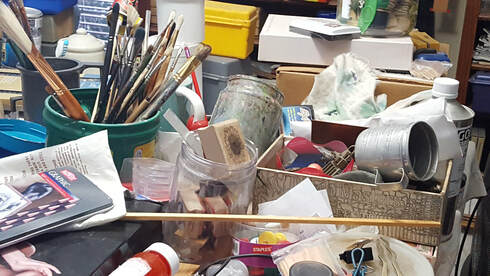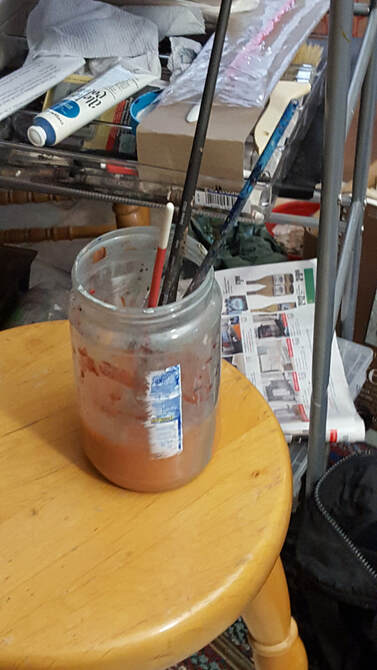 A Place for Everything...
A Place for Everything... Competent paintings are relatively easy to produce; it just takes instruction and practice. The public frequently prefers barely competent paintings that exhibit strong qualities such as garish colors, extreme values, or maudlin sentiment.
The man on the street can easily identify grossly incompetent paintings, but he can also reject valid exploration and radical originality—until he is reassured of its acceptance by others. He also commonly rejects genius. Genius and competence inhabit independent realms. Incompetence does not necessarily accompany genius, and nor does competence. In our culture it used to be that only fully competent work could qualify as genius. El Greco painted chalky contorted saints alongside worldly personages that were fastidiously represented, but the genius behind those distorted figures was not recognized. Instead he was scorned as a mad painter for more than two hundred years. Van Gogh, Gauguin, and Cezanne were not driven to genius as compensation for incompetency. Competence was not a relevant factor in their mission.
And there’s the word that pummels the inside of my cerebellum when I am in a museum: “mission.” The greats were on a mission, and it shows. The more we learn about art history the more we appreciate each great artist’s overarching objective. Our excitement can be almost painful.
Competent painting can be so boring. We are so respectful of art; we don’t even acknowledge to ourselves that we are bored. Sometimes it’s our fault for not penetrating deep enough to discover an artist’s mission, and sometimes the artist has no mission other than to impress or copy or be pretty.
 I am not going to illustrate this article with any painting I deem competent but hollow: not mine, not anybody’s.
I am not going to illustrate this article with any painting I deem competent but hollow: not mine, not anybody’s. Highly accomplished paintings are seductive in their own way, even to me. There is something impressive and appealing about them, but a painter who aspires to create a photo-realistic painting can do so easily after a modicum of instruction and practice. All too many painters are happy to reside at that level of competence.
I consider the bulk of my work to be exercise, and sometimes when I'm working “for real” but not paying attention a painting appears on my easel that boasts of nothing special, just a “good job.” I am not happy when a painting such as these garners high praise and admiration, because painting in that way is not my ambition, and my viewer misses my message. Empty paintings happen when I'm not being scrupulously authentic, not being courageous, not exerting the required energy. I sometimes worry that all my work falls into this category, and I resolve to be more brave, to ruin more paintings.
So what is it then that makes a painting worthy? It is far easier to make a list of characteristics that show a painting to be less than worthy, to be no more than competent, to be mediocre; but there is no one formula for greatness. Certainly if there were, then greatness wouldn't be so great after all. We could have a lengthy discussion on what makes Picasso great or what makes Michelangelo great or what makes Robert Motherwell great—but no one individual artist’s collection of qualities is held in common by all great painters.
One vital quality is absolute authenticity, where the artist paints only what she creates in the moment. This precludes reliance on merely perpetuating a style, a formula, a theme. A series is one thing, but watching an artist copy herself is a turnoff for me.
 RSS Feed
RSS Feed